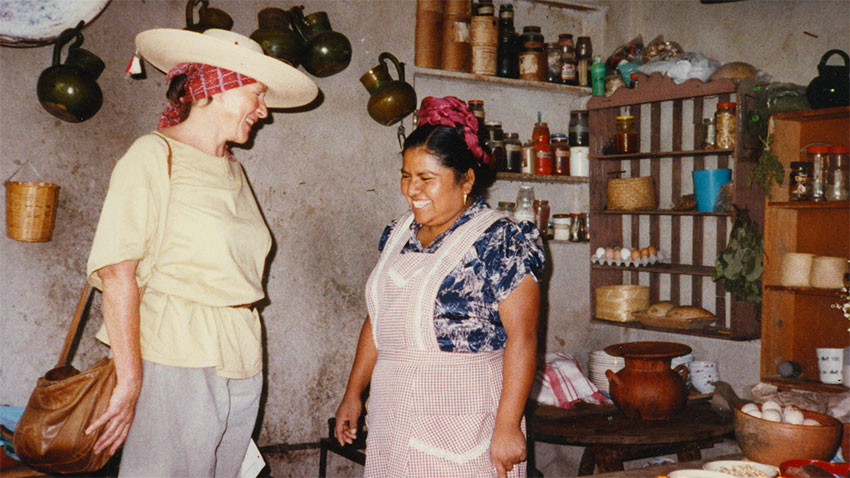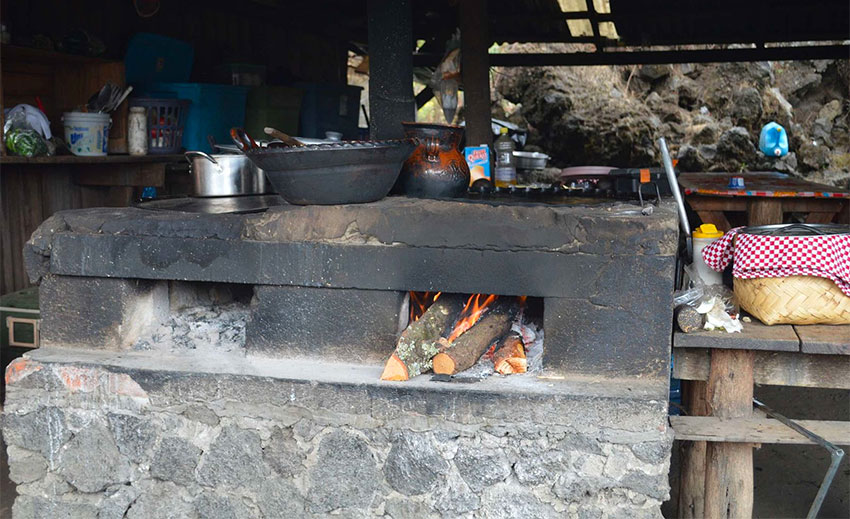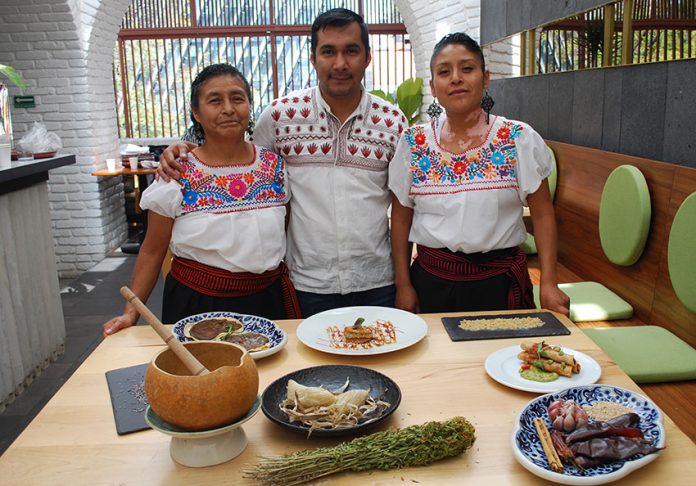When we think of amas de casa (housewives, literally ladies of the house) in rural Mexico, we picture older women in traditional dress, slaving over wood fires in adobe homes.
Scenes such as these certainly do play out in many parts of Mexico, but the creation and preservation of traditional cooking has taken on other dimensions. Aside from those who compile regional recipes in the form of cookbooks, several groups of devotees, recognizing the richness of this tradition, are working to preserve the creative legacy of generations in the kitchen.
Systematic documentation of traditional Mexican cooking began with the work of an Englishwoman by the name of Diana Kennedy, who fell in love with Mexican cuisine in the late 1950s and whose first book, The Cuisines of Mexico (1972), brought central and southern Mexican food to international attention.
In the decades since, Mexican gastronomy has become as important to the mammoth tourism industry as beaches, pyramids and handcrafts. Most of the focus has been on the restaurant industry. However, Kennedy’s work was with home cooks, traveling to their villages, documenting ingredients and techniques and “translating” them into workable recipes for modern cooks.
Decades later, there are new efforts to pick up where Kennedy left off. Not only have other foreign chefs “discovered” and worked to promote Mexican cuisine outside of Tex-Mex, Mexican public and private initiatives have sprung up to do much the same.

Cookbooks have been a part of this of course. Where Kennedy’s work has been on an introductory level for foreigners, a number of Mexican cooks and chefs have produced works that go into depth on the cooking traditions they know best.
For example, in 2012 Carmen Titita of El Bajío restaurant in Mexico City published a cookbook dedicated solely to soups, rice and pasta dishes — the sopas that precede the main courses of Mexican meals. Celia Florián has worked with Oaxaca home cooks to produce books that have become authoritative works in Spanish on that regional cuisine.
Journalist Dulce Villaseña, who has worked with Florián, comments that “Without having written recipes, traditional cooks guard in their minds the culinary treasures that have been passed down from generation to generation. And this is how they typically cook daily for their families, as well as cook for major festivals in their communities when called upon. … It is wonderful to see how they measure portions with their hands. Everything is calculated perfectly with fists and pinches, using local products at hand, and with this they prepare incredible dishes.”
Perhaps even more important than the written word has been the rise of organizations of cooks dedicated to preserving traditional recipes, ingredients and cooking techniques. They organize and bring respect to the work of these cooks, 90% of whom are women.
These organizations exist on the local, state and regional levels, with one of the best known being the Asociación de las Cocineras Tradicionales of Oaxaca (Association of Traditional Cooks of Oaxaca), headed by Florián. Work done by several Michoacán-based cooking organizations led Mexican cuisine to be included as a World Intangible Heritage in 2010.
The work by such groups has caught the attention of public and private entities. On the federal level, one important ally has been the Mexican Biodiversity Commission (Conabio). The agency sees traditional cooking as a way to promote and preserve Mexico’s biodiversity, especially in edible plants, and regards the use of locally sourced food as a means of sustainable development.

Their first major project was the digitalization in 2010 of Kennedy’s decades of handwritten notes created as she traveled the backroads of Mexico and interviewed everyday housewives.
A more recent project is Los quelites de México (in Spanish), a 2020 calendar that promotes the cooking and eating of Mexico’s native greens, known collectively as quelites. There are over 350 species of plants in this category, the best known of which are romeritos (seepweed or Suaeda Torreyana S. Watson), huaunzontle (Chenopodium nuttalliae), squash flowers and verdolaga (purslane or Portulaca oleracea). Most have fallen out of favor and are in danger of disappearing because of cultural changes, in particular population shifts into cities. However, such plants are highly nutritious, contain anti-oxidants and can even work to eliminate certain parasites and other digestive issues.
Such traditional cooking has caught the attention of fine diners as well. A number of well-known cooks have started successful restaurants, especially in Oaxaca, whose regional cuisine is now one of the best-known in Mexico. Others have collaborated with established restaurants to influence their menus.
One new restaurant in Mexico City is based on the idea of regular collaboration with traditional cooks. El Mexicano Masaryk opened in 2019 in a swank Polanco location.
Every six months the restaurant changes the menu to accommodate regional dishes that are taught to the chef and kitchen staff by traditional cooks. For the first six-month period, the menu featured items from the states of Oaxaca, Michoacán, Puebla and Quintana Roo, with the collaboration of such notable cooks as Benedicta Alejo of Michoacán and Ofelia Toledo of Oaxaca.
This does not mean that the resulting menu items are made exactly the way they’re done in rural settings. Wood fires are impossible in modern kitchens, and the dishes are adapted for a fine dining experience. But the cooks’ role is to make sure the dishes taste as close as possible to what they themselves make.
Currently one of the collaborating cooks/chefs is Irad Santacruz of Tlaxcala. Despite studying gastronomy in Spain, when asked about his state’s cooking, he found himself embarrassingly unaware. On returning to Mexico in 2006, he began researching and documenting.
Collaborating with families such as the five generations under Doña Nicolasa (98 years old) of Contla on the foothills of the Malinche volcano, he founded the restaurant Guardianas de la Tierra de Maíz (Guardians of the Land of Corn) in 2014 to preserve techniques and ingredients from local Tlaxcalan cooking.
Mexico News Daily
